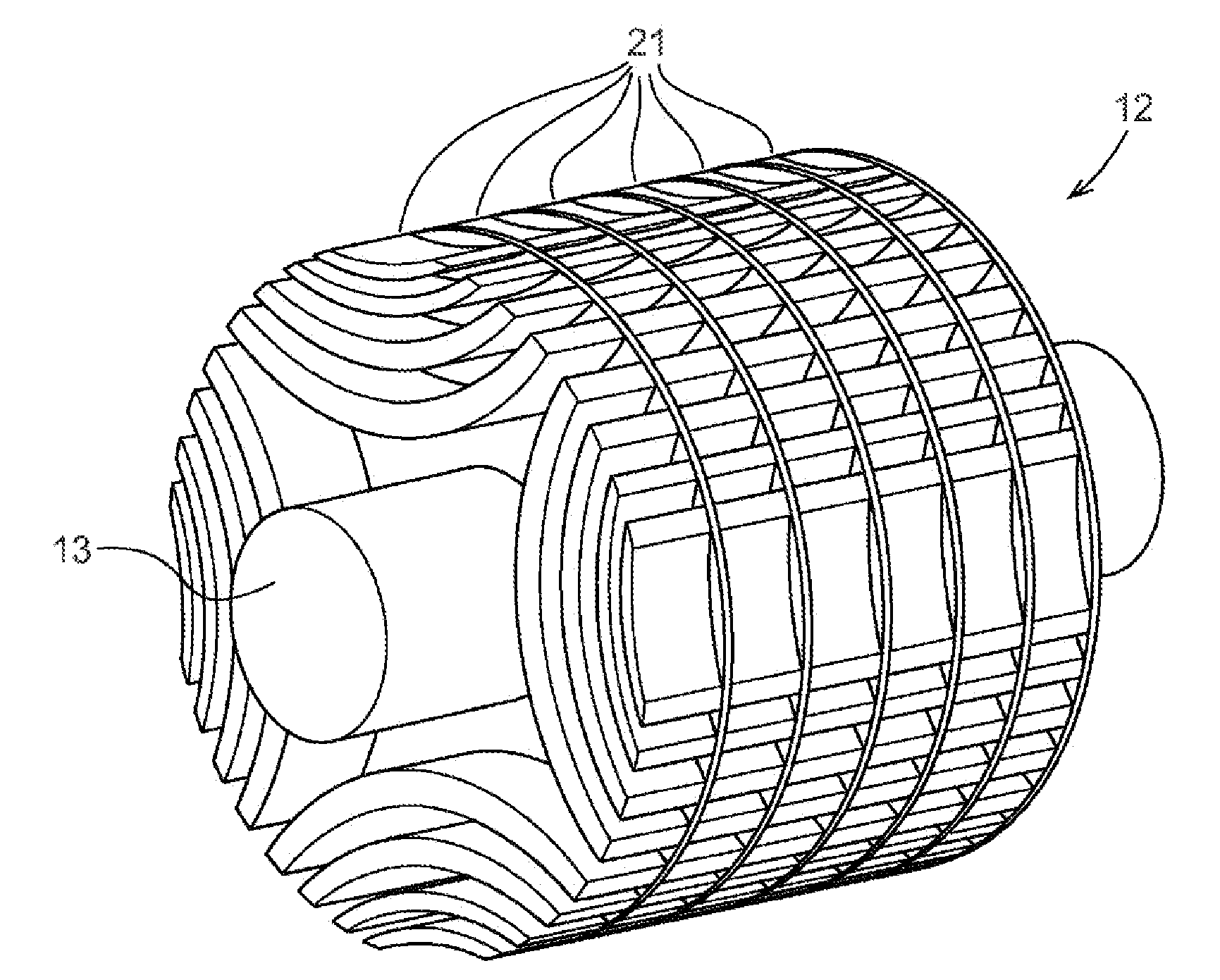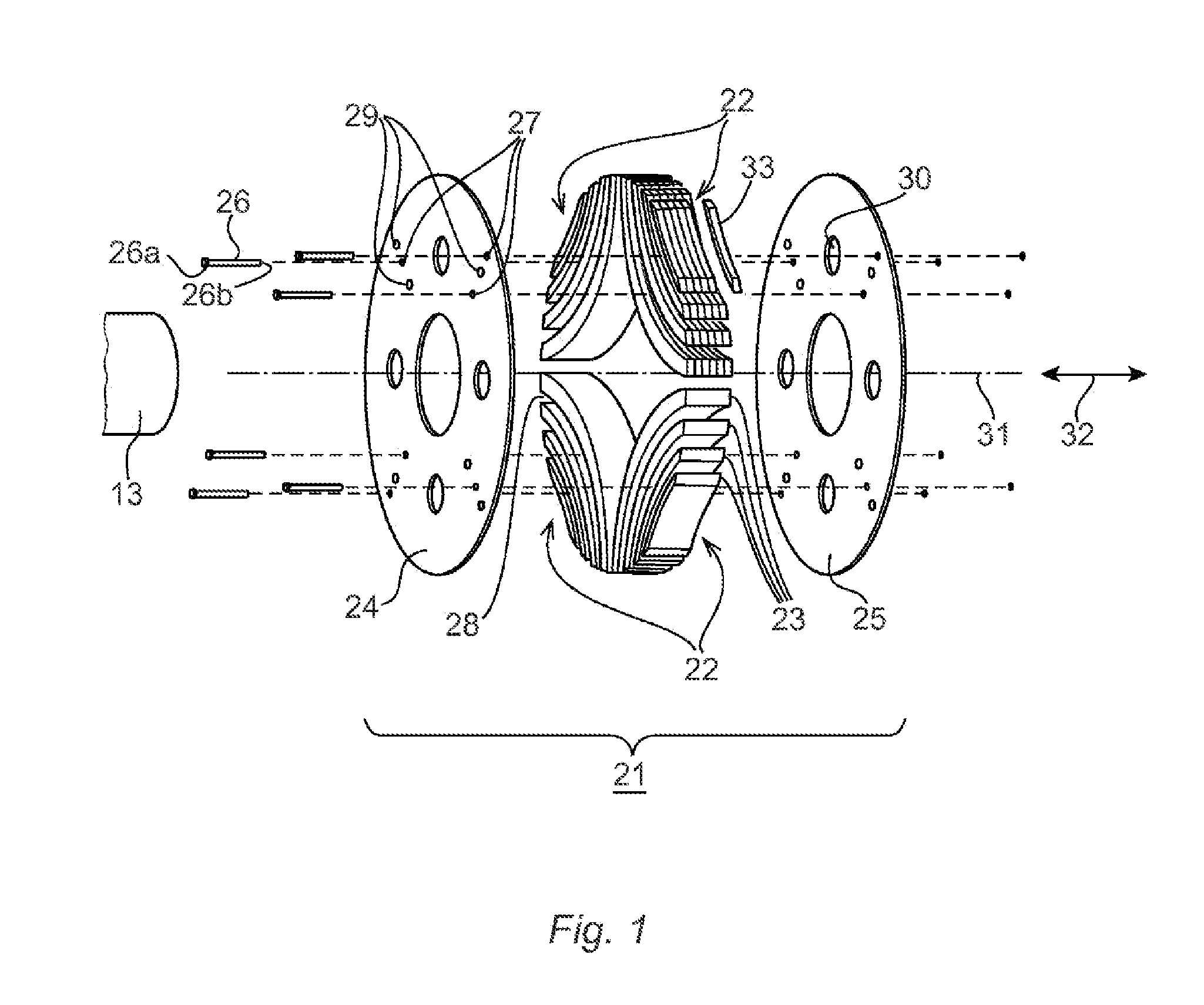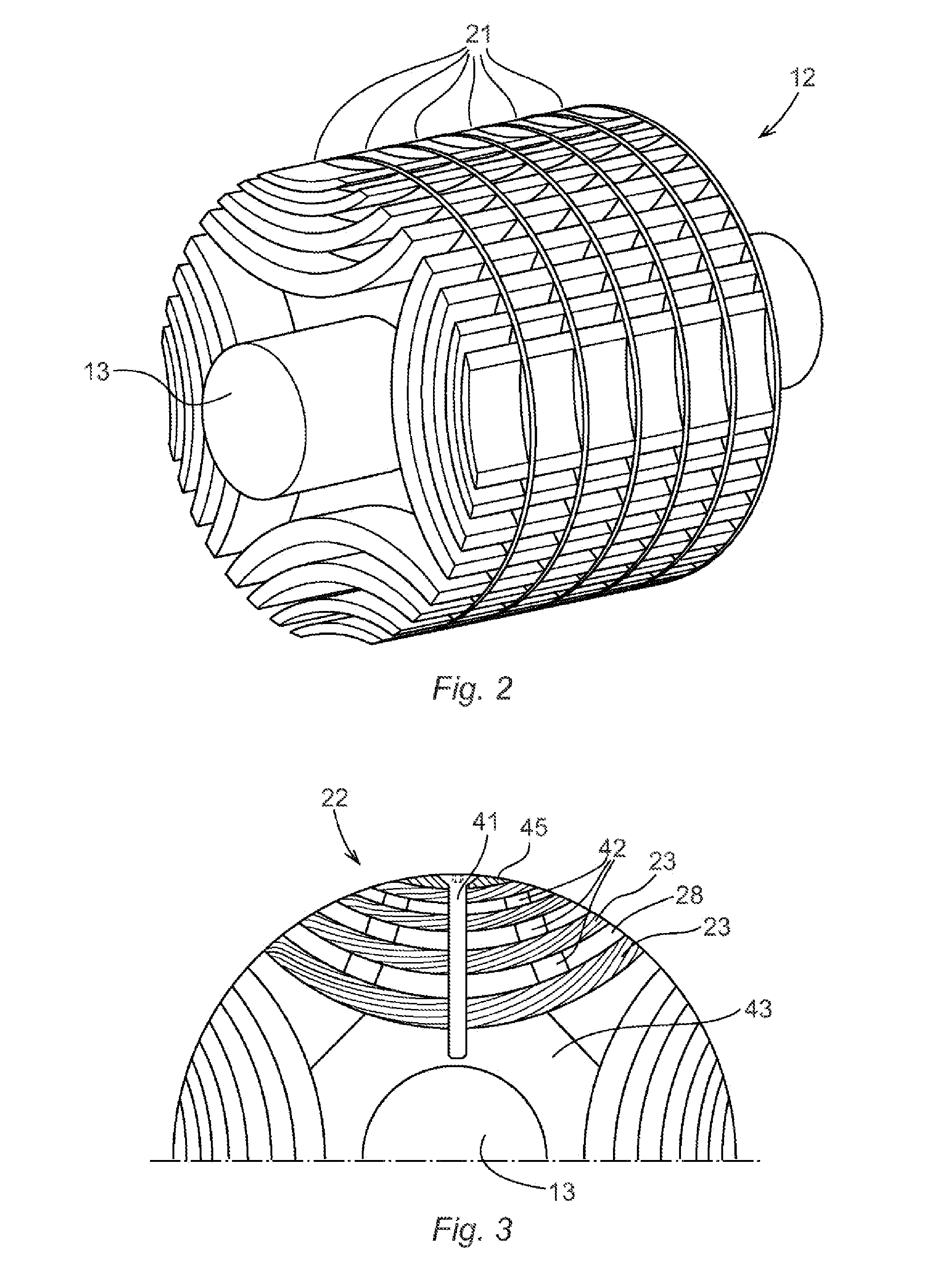Modular Rotor For Synchronous Reluctance Machine
a synchronous reluctance machine and rotor technology, applied in the direction of dynamo-electric machines, magnetic circuit rotating parts, magnetic circuit shape/form/construction, etc., can solve the problem of limiting the size or robustness of synchronous reluctance machines, limitations may be important, and prior art rotor designs are not optimum for enabling simple manufacturing techniques, etc. problem, to achieve the effect of increasing the power factor of the machine, facilitating simple manufacturing, and facilitating the problem o
- Summary
- Abstract
- Description
- Claims
- Application Information
AI Technical Summary
Benefits of technology
Problems solved by technology
Method used
Image
Examples
Embodiment Construction
[0035]The rotor 12 is, in accordance with the present invention, formed by a plurality of rotor modules 21, of which one is schematically displayed in an exploded view in FIG. 1. The rotor modules 21 comprise a plurality of poles 22 disposed in adjacent sectors about a common axis 31, each pole 22 comprising a plurality of magnetic segments 23 spaced apart from one another in radial direction. The magnetic segments 23 preferably comprise a plurality of laminates 33 stacked in an axial 32 or radial direction.
[0036]The rotor modules 21 further comprise a support plate 24, 25 to which the plurality of poles 22 is bonded. The bonding is implemented e.g. via adhesives, welding or fasteners. The same bonding means may be used to bond the laminates 33 to one another.
[0037]According to the embodiment of FIG. 1, two support plates 24, 25 preferably of a non-magnetic material are provided on axially opposite sides of the poles 22. The support plates 24, 25 may be of austenitic steel but are p...
PUM
 Login to View More
Login to View More Abstract
Description
Claims
Application Information
 Login to View More
Login to View More - R&D
- Intellectual Property
- Life Sciences
- Materials
- Tech Scout
- Unparalleled Data Quality
- Higher Quality Content
- 60% Fewer Hallucinations
Browse by: Latest US Patents, China's latest patents, Technical Efficacy Thesaurus, Application Domain, Technology Topic, Popular Technical Reports.
© 2025 PatSnap. All rights reserved.Legal|Privacy policy|Modern Slavery Act Transparency Statement|Sitemap|About US| Contact US: help@patsnap.com



